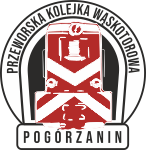PL: Trasa kolei wąskotorowej z Przeworska do Dynowa rozpoczynała się z na stacji Przeworsk Wąski, następnie podążała na wschód, omijając miasto Przeworsk szerokim łukiem, zostawiając za sobą bocznice, zabudowania i urządzenia przeładunkowe stacji towarowej. Następnie podążała w dolinę rzeki Mleczki, która niejednokrotnie niszczyła torowisko i mosty na szlaku kolejki. Mijała potok Łęg – dopływ Mleczki, przez Urzejowice, Krzeczowice, Kańczugę, Łopuszkę Wielką, Manasterz, Zagórze, Hadle Szklarskie, docierała do Jawornika Polskiego. I dalej coraz węższą doliną, pnąc się ku górze znikała w czeluściach Szklarskiej Góry – najdłuższego tunelu wąskotorowego w Europie. Po opuszczeniu którego, mijając Szklary docierała skrajem doliny Sanu do Bachórza, stamtąd już prosto do Dynowa, kończąc swój 46-kilometyrowy bieg.
EN: The route of the narrow-gauge railway from Przeworsk to Dynów started at the Przeworsk Wąski station and then went east bypassing the city of Przeworsk, leaving behind cargo station buildings, the sidings and handling equipment. Then the railway rocked into the valley of the Mleczka river. The Mleczka river often destroyed lines and bridges along the railway route. The route also passed the Łęg stream – a tributary of the Mleczka river, through Urzejowice, Krzeczowice, Kańczuga, Łopuszka Wielka, Manasterz, Zagórze, Hadle Szklarskie, and reached Jawornik Polski. Further along it went into an increasingly narrow valley and climbing upwards, it disappeared into the depths of the longest narrow-gauge tunnel in Europe. After leaving the tunnel, and then passing Szklary, it reached the edge of the San valley to Bachórz, and from there straight to Dynów, ending its 46-kilometer run.

